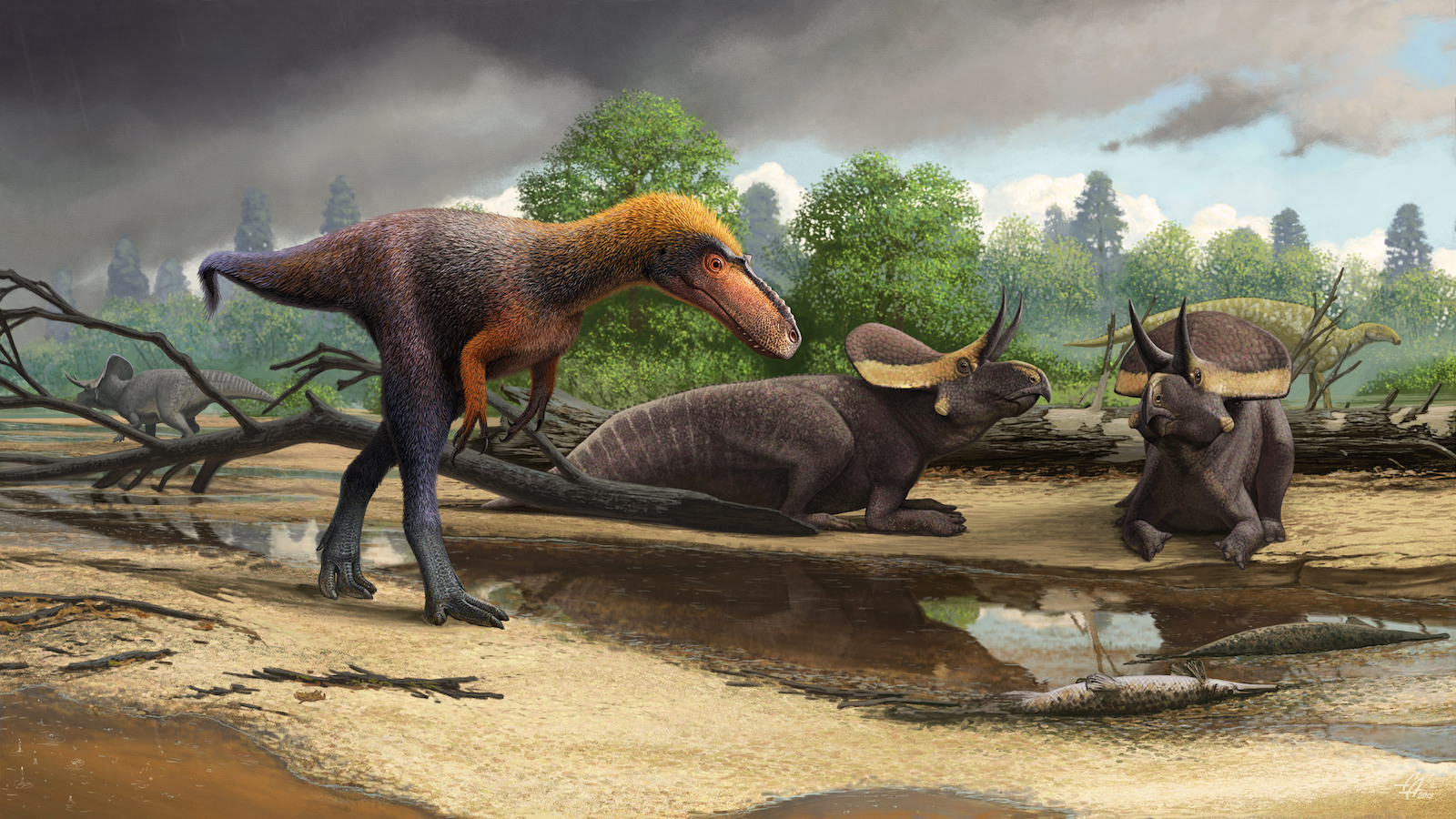Newfound 'Mini T. Rex' Was a Tiny Terror at Just 3 Feet Tall
This small but fierce "mini rex" was a lightweight compared with the dinosaur king. Now dubbed Suskityrannus hazelae, the tyrannosaur would have tipped the scales at no more than 90 lbs. (40 kilograms). In contrast. T. rex weighed a whopping 18,000 lbs. (8,160 kg).
"The animal would have looked a bit more like the "Jurassic Park" Velociraptors in terms of size and head height than its later huge relatives, like T. rex," said study lead researcher Sterling Nesbitt, an assistant professor in the Department of Geosciences at the Virginia Tech College of Science. [Photos: Tiny Tyrannosaur Dinosaur Was About As Big As T. Rex's Skull]
Nesbitt found the remains of this incredible dinosaur when he was a pipsqueak himself — just a 16-year-old high-school student who was on a dig expedition in western New Mexico in May 1998. That dig was led by Doug Wolfe, the co-founder and CEO of the Zuni Dinosaur Institute for Geosciences in Springerville, Arizona, who is a co-author on the study.
In fact, the first partial skull of the mini tyrannosaur was found in 1997 by Robert Denton, now a senior geologist with Terracon Consultants, an engineering consulting firm in New Jersey. As a teenager, Nesbitt was keen to find more of that specimen, so he went to the same location to hunt for related bones. But "on my way there, I found the remains of the more complete specimen," Nesbitt told Live Science in an email. "I spent the next few days with my eyes glued to the ground looking for all the little fragments of bone."
The specimen Nesbitt found is so complete, it's helping researchers learn about this wee tyrannosaur, which predates T. rex by about 25 million years.
For instance, S. hazelae stood about 3 feet (1 m) tall at the hip and measured about 9 feet (3 m) from head to tail. To put that in perspective, the skull of Sue the T. rex at the Field Museum in Chicago is about 5 feet (1.5 m) long.
In addition, the unique anatomy of S. hazelae shows how the older and smaller tyrannosauroids from North America and China were linked to the larger tyrannosaurids that lasted until the asteroid slammed into Earth about 66 million years ago. In fact, S. hazelae is one of the last small tyrannosauroids on record. The lineage of T. rex and S. hazelae date back to the middle Jurassic, but it wasn't until the end of the Cretaceous period, about 85 million years ago, that these dinosaurs got huge, Nesbitt said.
Get the world’s most fascinating discoveries delivered straight to your inbox.
"Suskityrannus is a key link between the enormous bone-crunching dinosaurs like T. rex and the smaller species they evolved from," Steve Brusatte, a paleontologist at the University of Edinburgh, who was not involved in the study, said in a statement. "The new species shows that tyrannosaurs developed many of their signature features like a muscular skull, broad mouth and a shock-absorbing foot when they were still small, maybe as adaptations for living in the shadows."
Unfortunately, the Cretaceous-age tyrannosaur died as a youngster; S. hazelae was only about 3 years old when it expired, according a growth ring analysis of its bones. (Like trees, dinosaur bones laid down new rings as the animal grew.)
The study was published online today (May 6) in the journal Nature Ecology & Evolution.
- Photos: Newfound Tyrannosaur Had Nearly 3-Inch-Long Teeth
- Baby T. Rex Was an Adorable Ball of Fluff
- In Images: A New Look at T. Rex and Its Relatives
Originally published on Live Science.

Laura is the managing editor at Live Science. She also runs the archaeology section and the Life's Little Mysteries series. Her work has appeared in The New York Times, Scholastic, Popular Science and Spectrum, a site on autism research. She has won multiple awards from the Society of Professional Journalists and the Washington Newspaper Publishers Association for her reporting at a weekly newspaper near Seattle. Laura holds a bachelor's degree in English literature and psychology from Washington University in St. Louis and a master's degree in science writing from NYU.




